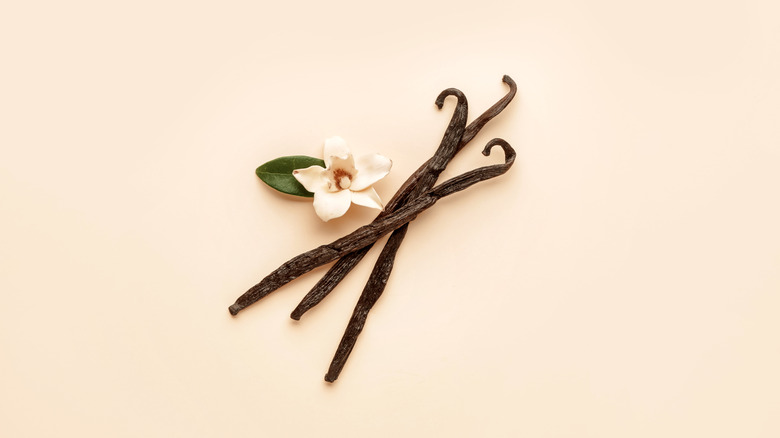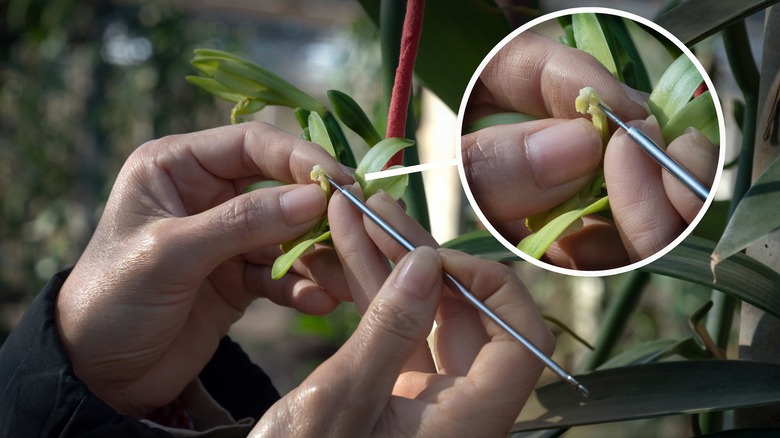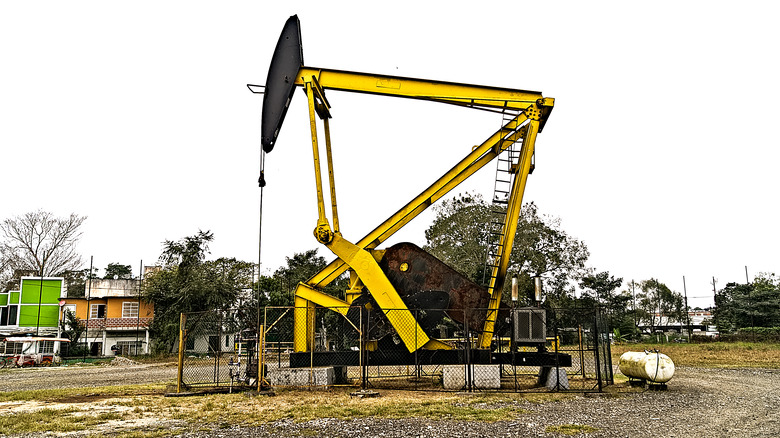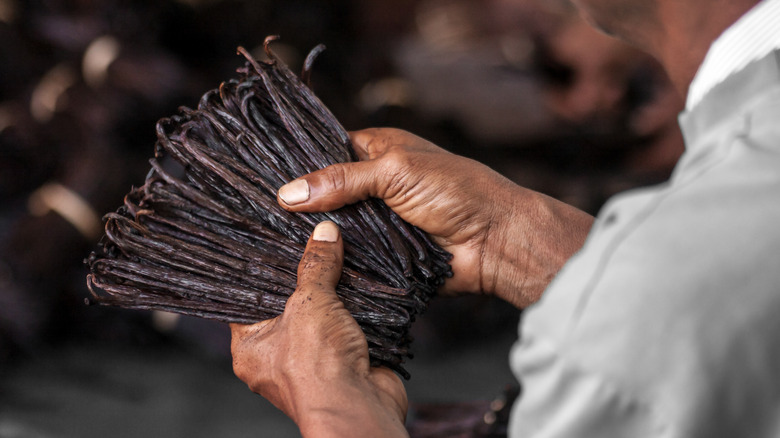The Reason Madagascar Vanilla Is So Expensive
Vanilla has heard enough of your slander. It's sick and tired of being called boring, even by dictionaries. Merriam-Webster actually includes this as a secondary definition of vanilla: "lacking distinction: plain, ordinary, conventional." How dare they! Vanilla is anything but ordinary, yet many ascribe to the belief that it's dull, presumably based on their distaste for vanilla ice cream (or perhaps their preference for chocolate ice cream). However, Eater is quick to point out that vanilla is an essential ingredient in nearly all pastries and desserts, even if it's not always the star of the show. Chances are you've got some vanilla extract in your pantry for this very reason, and if you got the good stuff, you probably noticed the price tag.
According to Atlas Obscura, vanilla is the second most expensive spice in the world, behind saffron. In Madagascar, the world's leading producer of vanilla, prices can soar to as much as $600 per pound. The world is so dependent on Madagascar's vanilla that one bad vanilla harvest on the island can cause global prices to increase more than twofold. At present, The Spice House estimates that Madagascar accounts for 80% of the world's total vanilla production, but if it weren't for the legacy of French colonialism, this island would not be able to hold a near monopoly on vanilla, and consequently, the price might not be so high.
How Madagascar became the vanilla capital
To understand Madagascar's vanilla industry, you have to understand a few basics about vanilla itself. As The Spice House reveals, vanilla beans are not beans; they are the fruit of vanilla orchids (vanilla planifolia), which are native to Mexico. According to Bloomberg, Spanish colonists brought vanilla back to Europe after invading Mexico, but for centuries they couldn't figure out how to make the flowers produce fruit. As it turns out, the vanilla orchids in Mexico were being pollinated by a pair of rare bee species only found in the area, and without these bees, vanilla plants would not produce bean pods.
A breakthrough came in 1841 in the French colony of Réunion, a small island off the coast of Madagascar. According to Atlas Obscura, Edmond Albius, an enslaved 12-year-old, discovered how to pollinate vanilla orchids by hand. The flower is self-reproductive, but a natural partition separates the pair of sex organs. Albius figured out that if he punctured the side of the flower, he could remove the separation and press the reproductive organs together manually, achieving self-pollination. In Albius's time, the island of Réunion was known as Bourbon, and the vanilla grown there, called Bourbon vanilla, is now known worldwide. But it was nearby Madagascar, which had more land and a more significant labor force, where Albius' method took hold.
The end of Mexican vanilla
Réunion is a still French colony, according to Atlas Obscura, and although the French technically abolished slavery upon assuming control of the land, the colonizers wielded enormous power over the native Malagasy people, which were put to work in the many vanilla plantations that cropped up across the island. At first, Madagascar's vanilla could not compete with that of Mexico, which remained the world's primary supplier until the 20th century, but a series of sociopolitical occurrences ultimately shattered the Mexican vanilla industry, giving Madagascar a near monopoly on the spice.
In 1910, the Mexican Revolution broke out, and the country was gripped by war for years, crippling local agriculture. Then, in 1932, large oil reserves were discovered near Papantla, the heart of Mexico's vanilla industry. Oil was so valuable that all agricultural operations on the land were terminated, and massive deforestation commenced to clear space for oil drilling. Removing so many trees lowered humidity levels in the region, making the climate inhospitable to vanilla going forward. And just like that, vanilla was pushed out of its native home.
Other factors affecting vanilla prices
The loss of Mexican vanilla gave more power to Madagascar's plantations, but it would take one final move for the island to secure its dominant position in the business. Per Atlas Obscura, in 1968, the Vanilla Alliance, a collective of Madagascar vanilla producers based in France, launched an initiative called the Vanillamark to combat the growing popularity of synthetic vanilla substitutes. The Vanillamark label purportedly told customers which products contained real vanilla; however, the Vanilla Alliance only allowed the label to go on products containing Madagascar vanilla, slyly suppressing authentic vanilla manufacturers elsewhere. Vanillamark was phased out in the 1980s, but by then, the initiative had already made Madagascar synonymous with vanilla in the eyes of many, especially Americans.
According to The Spice House, the process. of hand-pollinating and harvesting vanilla is extremely laborious. It takes nearly three years for a vanilla orchid to bloom, and when it finally does, the bloom lasts less than 24 hours. Farmers must watch their crops obsessively to perform pollination at the perfect moment. Once they bear fruit, the beans must be cured through a cycle of sunbathing and exposure to the night air and hand-massaged by the farm workers. Despite all the effort, Bloomberg reports that the legal minimum wage for Madagascar farm laborers is a mere 18 cents an hour. Cheap labor is another reason spice companies invest in Madagascar rather than other nations, but unfortunately, most of the money you spend doesn't go into the laborer's pockets.



